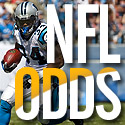Griffey...hurt? That didn't take long
04/10/2003
Codding Home / Sports Channel / Bullz-Eye Home
The funny thing about talent is, it means jack if you never have the chance to use it.
Just ask Vince Carter and Ken Griffey Jr.
Theirs are sad stories, really, when all the money and the expectations are stripped away. But the funny thing about sports fans is, by nature we're not a forgiving and understanding breed. We can't ignore those seven- and eight-figure annual salaries, and we refuse to disregard our own lofty expectations.
Just ask Vince Carter and Ken Griffey Jr.
They are both, of course, supremely talented athletes who, just a couple years ago, seemed destined for sports immortality. They are also both, of course, hurt again, Carter for the final few games of the NBA's regular season and Griffey for substantially longer.
Those are the two words that Raptors and Reds fans are sick and tired of hearing: hurt again. To any sports fan, "hurt" by itself is a nasty four-letter word, one that can instantly strangle the life out of a possible championship run. Shackle the word "again" to the end of it, though, and that dejection immediately mutates into annoyance, aggravation and maybe even disgust. "He's hurt... again? What a bum."
Just ask Vince Carter and Ken Griffey Jr.
He was drafted out of MJ's college in 1998, he had MJ's hops, he had MJ's scoring drive. With MJ himself enjoying what appeared to be permanent retirement, Vince Carter was trumpeted as "The Next Jordan" following a rookie season that featured an 18.3 ppg average and piles of highlight reel dunks. He won Rookie-of-the-Year honors, earned nicknames like "Air Canada" and "Vin-sanity" and led his Raptors to a franchise-best 23-27 record in that strike-shortened first season.
The following year, Carter's popularity soared as he was the All Star game's leading vote getter with more than 1.9 million tallies. But it was his performance the day before the All Star game that electrified his fans and fellow players, winning the Slam Dunk Contest with a barrage of ludicrous jams that still rank as some of the best that competition has ever produced.
The 1999-2000 season was also a success for the Raptors, who earned the first postseason berth in franchise history with a 45-37 record. Carter was magnificent, averaging nearly 26 points a night while shooting better than 46% from the floor and 40% from three-point land. Best of all, Vince played in all of Toronto's 82 games that year.
And that's when it happened.
He averaged nearly 28 ppg during the 2000 campaign and the Raptors once again advanced to the playoffs with a 47-35 mark, but Carter missed seven games with a nagging leg injury, an early sign of much worse times ahead.
Knee problems limited Vince to just 60 games last season, and when he was finally shut down for the year the Raptors run of playoff appearances seemed dead.
But here's where things got interesting, because without Carter Toronto somehow rolled off 12 wins in their final 14 games and earned that postseason invitation. Doubters began to wonder if Carter's score-first mentality hindered the performance of his teammates. After all, how else could you explain the late-season turnaround with Vince on the sidelines nursing his "jumper's knee"?
This year has been absolute misery for the former Tar Heel. More knee problems cost him 10 games in November; a strained patellar tendon then knocked him out from December 11 to January 26; and now, a sprained ankle suffered in the April 6 loss to the Nets has ended his season after just 42 games.
He's hurt...again?
But it gets worse. Carter's scoring average has dropped the past two years, from 27.6 ppg in 2000 to 24.7 last season and, finally, 20.6 this year. Toronto's record has also plummeted since Vince's durability began to falter: 47-35 in 2000, 42-40 last year and a dismal 24-54 this season. Things were markedly better with Carter in the lineup (18-25 vs. 6-29) but this wasn't a playoff-caliber team even with #15 on the floor.
Okay, so anything's possible in the East... .
Still, this isn't the career curve that Toronto fans envisioned when Carter first leapt onto the scene during that memorable rookie year. But now that he's hurt -- again -- the Raptors have to be wondering if he'll ever again be the dominating offensive presence he once was.
Hell, right now they'd probably settle for 20 points a night as long as he was in uniform for 70 or 80 games.
Seventy games was exactly what the Reds got out of Griffey last season, his third with Cincinnati since a trade from the Mariners brought him to Ohio following the 1999 season. Junior enjoyed a remarkable career in Seattle, flaunting an average of 52 homers and 142 RBI per year from 1996-1999 while missing a total of 29 games during that four-year stretch. And with 398 home runs at the age of just 30, Griffey appeared to be a lock to surpass Hank Aaron's 755 career taters.
The Reds, meanwhile, were coming off a surprising 96-67 finish in 1999, so when Cincinnati fans learned of the trade that brought the hometown boy Griffey back to the Queen City for the bargain-basement price of just $9 million a year, a revival of The Big Red Machine seemed inevitable.
But the Reds fell 11 games in the standings with Junior in centerfield, and while the 11-time All Star, 10-time Gold-Glove winner and 1997 AL MVP managed to slug 40 homers and drive in 118 runs in his inaugural National League season, he hit just .271, his lowest average since 1995, he failed to win a Gold Glove for the first time since his rookie season of 1989, he missed 17 games with various injuries and, most important, the Reds failed to build upon their successful 1999 campaign.
The following year, Junior partially tore his right hamstring during spring training, an injury that limited him to just 111 games, most of which were uneventful: .286, 22 homers, 65 RBI. The Reds, meanwhile, plunged to 66-96 that year, a record that placed them above only the Pirates in the NL standings.
Then last year, following a few slams in the newspapers from former teammates Dmitri Young and Pokey Reese regarding his attitude, Griffey tore his patellar tendon and partially dislocated his kneecap in early April and didn't play again until May 24. A strained right hamstring, the same one he tore a year earlier, knocked Junior out for a handful of games in early June and then 25 more from the end of June to the end of July.
In total, Griffey registered just 197 at-bats last season, hitting a mere eight home runs and driving in 23 runs with a .264 average. And again, Cincinnati finished the year below .500 at 78-84.
Suddenly, that bargain-basement salary didn't seem to be such a bargain. Suddenly, Reds fans were missing Mike Cameron in centerfield. Suddenly, 755 homers had retreated far beyond Griffey's reach.
But this year was going to be different. Oh sure, the fans continually bashed him on call-in radio shows, and yeah, the Reds tried to deal Griffey for Phil Nevin straight-up this spring, but everybody said The Kid was going to explode this season. He strengthened his legs all winter to avoid injury, he seemed focused for the first time since his 2000 arrival, and teammates and "experts" alike were predicting the return of that smooth lefty swing and the 40-plus homers that it so effortlessly created in Seattle.
And then, wham, a Paul Bako drive to deep left-center with the bases loaded sent Griffey sprawling to the ground in an effort to make a brilliant, potentially game-saving catch. But as he hit the ground, you just knew what was about to happen. Junior clutched his right shoulder and rolled over in pain with a separated shoulder.
He's hurt... again?
How did Reds fans take this one? "It is such an old story with him," said one of my buddies from Cincinnati earlier this week. "Such a waste of so much talent. He went from the best player in the game to one that will be forgotten. At least he got that last $80 million to carry him through."
But come on, it's not like he got hurt popping wheelies on his motorcycle. He injured himself trying to make a spectacular play in the field just days after he'd wrapped up a promising, healthy spring. You've got to feel sorry for him... right?
"Nobody feels bad for a guy making that kind of cash," said another one of my Cincinnati friends.
Like I said, sports fans can't ignore those seven- and eight-figure annual incomes, and we refuse to disregard our own lofty expectations.
So what's next for Vince Carter and Ken Griffey Jr.? Well, at just 26 years old, Carter still has plenty of time to resuscitate his career, but his success this time around won't necessarily be measured by his personal stats, but rather his team's won/loss record. After all, it wasn't just the dunks and the stats and the MVP awards and the commercials that made MJ the greatest. He won six rings, and in the sports world true achievement is ultimately measured by your ability to lead your team to the highest of heights. He'll never be the next Michael Jordan, but fans in Toronto are hoping he'll just be Vince Carter again.
As for Griffey, whose career once followed the yellow-brick road, his future isn't so bright. He's 33 now and the criticism he's been hammered with in Cincinnati seems to have left him bitter, and for good reason. But the question on everybody's mind now is, if Junior finished playing the game today, is he Hall-of-Fame material?
Three or four years ago, that question would've seemed ludicrous because that yellow-brick road appeared to lead right to the front steps of Cooperstown with first-ballot admission waiting at the door.
Now, it's not so clear.
With 469 career homers, Junior hasn't yet reached the "automatic" 500 mark, and since we're dealing with the hypothetically immediate end of his career, then we obviously have to judge him based on those 469 home runs.
But what about the other numbers? As I mentioned above, Griffey is an 11-time All Star, a 10-time Gold-Glove winner and the 1997 AL MVP as well as the MVP of the 1992 All-Star game. He's a career .295 hitter who hit at least 40 homers seven different times, 56 twice, and he led his league in that category four times while totaling 100-plus RBIs eight times. Plus, he hit .305 in 15 career postseason games with the Mariners with six homers and 11 RBI, and while he hasn't yet reached the World Series, who can forget the sight of Griffey racing around third to score the series-winning run on an Edgar Martinez double in the 1995 ALDS against the Yankees?
In my mind, that's the resume of a Hall of Fame centerfielder. Sure, these last few years in Cincinnati likely cost Griffey that legendary first-ballot entry but he'll eventually get in. For nearly a decade, Junior was the best player in the game, and that simply can't be ignored.
But I don't think we've seen the last of that smooth lefty swing, and I know Carter still has a little "Vin-sanity" left in those 26-year-old legs. But until we're shown undeniable proof that these former stars can stay in the game for a full season, we'll remain skeptical. Because the funny thing about sports fans is, by nature we're not a forgiving and understanding breed.
Just ask Vince Carter and Ken Griffey Jr.
Questions/comments? Send
all e-mails to jcodding@bullz-eye.com.






